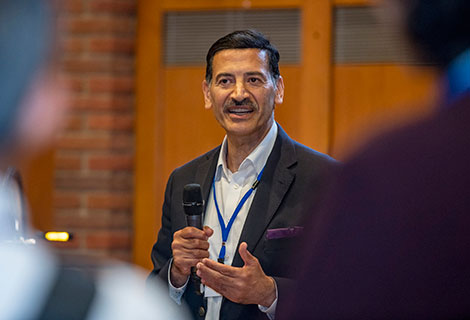Professor Dame Wendy Hall from the University of Southampton has been announced on the 10th annual UKtech50 - a list of the most influential people in the UK tech sector.
The Regius Professor of Computer Science is the only academic to appear on the prestigious list, published by Computer Weekly.
Dame Wendy is an Executive Director of the Web Science Institute and was recently announced by the UK government as the first Skills Champion for AI in the UK.
She has also appeared today on BBC iPlayer in a People of Science interview with Professor Brian Cox, discussing the life and discoveries of one of her personal heroes, Alan Turing.
Computer Weekly's annual UKtech50 represents a definitive list of the movers and shakers in UK technology and includes business and industry leaders that are driving the role of technology in the UK economy.
"This list is full of people who I admire hugely and who have done so much to help create such a strong tech sector in the UK," Dame Wendy said. "I'm amazed that I get into such a list, especially being the only academic to do so."
Dame Wendy appeared in a list of 30 "AI gurus" in Europe to follow on Twitter last week on Sifted, a new site for the continent’s innovators and entrepreneurs.
"The UK must continue to build on its strength in the tech sector over the coming decade, particularly in AI, to retain our world leading status in this area," she added. "This means continuing to invest in tech start-ups and helping them grow into companies that can compete on the global stage.
"But it also means continuing to invest in our world leading universities, because this really does give us an edge internationally compared to other countries of a comparable size to the UK."
Dame Wendy spearheaded the launch of the Z21 Innovation Fund in 2017, drawing together funding from the University of Southampton and the Solent Local Enterprise Partnership to capitalise on the potential of emerging University web startups.
She became a Dame Commander of the British Empire in the 2009 New Year’s Honours list, and is a Fellow of the Royal Society.
